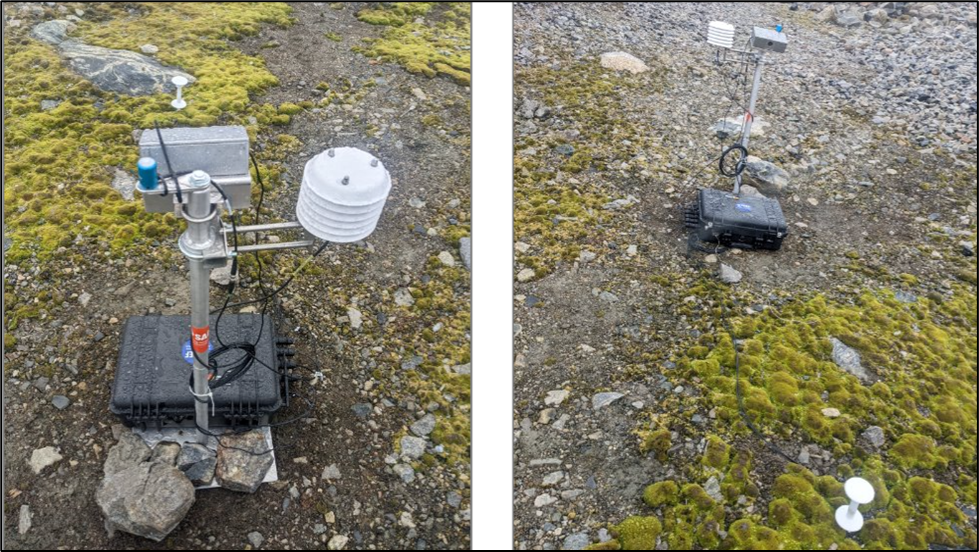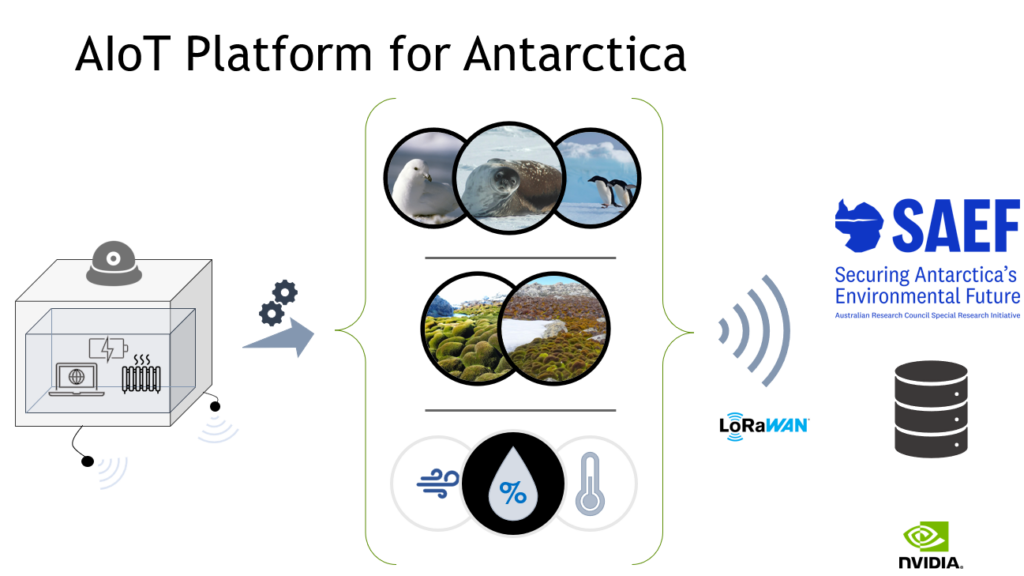Antarctica plays a crucial role in regulating Earth’s climate. Most climate research into the world’s coldest, most windswept continent focuses on the surrounding Southern Ocean’s carbon dioxide absorption, or its vast, sunlight-reflecting glaciers.
A group of Australian scientists is taking a different approach. Researchers are diving deep into Antarctic moss beds, using an AI-powered edge computing platform to look for clues about how warming in Antarctica may impact the rest of the world.
Less than 1% of Antarctica’s surface is covered in moss. But the moss’s existence—and its ongoing health—plays an outsized role in its ecosystem.
Mosses, like other plants, absorb atmospheric CO2 to grow. Moss beds are like miniature forests, providing habitat for crucial microscopic microbes, fungi, and micro-animals, like tardigrades and mites, which make up some of the lowest rungs on Antarctica’s food chain. These plants and animals can survive in Antarctica because they can dry out and freeze to survive the nine-month Antarctic winters, which also makes them well-suited to space experiments (and travel).
Over the past two decades, scientists have become increasingly alarmed by the deterioration of moss health in many parts of Antarctica. They’ve observed moss communities drying out, due to changing wind speed patterns linked to climate change and ozone depletion. While moss beds make up a small part of Antarctica’s ecosystem, they’re crucial for soil stabilization—and continued CO2 sequestration—as well as for maintaining biodiversity.
Scientists from Securing Antarctica’s Environmental Future (SAEF), a consortium of researchers funded by the Australian Research Council, developed a small, autonomous year-round monitoring platform to measure and analyze moss health—even when the moss cover is buried in more than three-feet of snow.
Antarctica’s climate is extremely cold and harsh—there’s no sunlight for half the year—however, mosses create their own warmer microclimates. Therefore, researchers cannot rely on weather stations to investigate why the moss layer is changing.
The device, named the Artificial Intelligence of Things Platform, or AIoT Platform, has a solar panel and an insulated battery. This means it can be used almost anywhere and collects data year-round to monitor moss beds.
The platform is built around an NVIDIA Jetson Orin Nano, a small yet powerful computer that can handle AI workloads and deliver up to 40 TOPS of AI performance with power options between 7W and 15W. It is housed in a hardened 3’x4’ Pelican case, alongside different sensors, which can collect and analyze data including moss canopy and air temperature, relative humidity, soil moisture and heat flux, solar radiation, and imagery.
The platform runs an image segmentation model (SegFormer, for semantic segmentation), which both ingests and then analyzes all the imagery data at the edge. The model was trained on eight NVIDIA A100 Tensor Core GPUs using NVIDIA TAO AutoML, enabling researchers to access state-of-the-art pre-trained image segmentation models that could be easily fine-tuned for the moss health algorithm.

According to Distinguished Professor Sharon Robinson, the deputy director of science implementation at SAEF, using NVIDIA TensorRT to optimize the image segmentation model lowered the time spent processing the image by 1.6x. It also significantly reduced power consumption and improved battery life for the entire AIoT platform.
“The platform continuously processes streams of data and images coming from the sensors, and extracts relevant information, which minimizes the amount of data that needs to be transmitted back to Australia,” Robinson said.
“The data that gets sent back lets us immediately understand how climatic events are changing the environment in and above these ancient moss forests, and we can track changes in the health of the moss as well as other biodiversity signals, and understand how that relates to the changes in environmental conditions.”
Rather than constantly sending large raw datasets across limited bandwidth for processing, the AIoT Platform crunches data at the edge. It then transmits the results—a much smaller amount of data— back to scientists at an Antarctic research station through long-range, low-power communications, using the LoRaWAN protocol. That data is then forwarded to the SAEF database, by satellite or LoRaWAN.
When the seasons change and the weather clears, the raw data can be retrieved by scientists during field visits where the platforms are deployed.

To conduct its Antarctic moss research, SAEF used NVIDIA A100 Tensor Core and NVIDIA RTX A6000 GPUs it received from the NVIDIA Academic Grant Program. SAEF is currently finalizing the second generation to be deployed on the field this year.
The team also led the Antarctic Terrestrial and Nearshore Observing System project of the Australian Antarctic Division to adopt the Jetson platform for its upcoming fleet of remote sensing towers for Antarctica. Making the two remote sensing programs interoperable will expand the coverage of both remote monitoring systems.
Learn more about how Arctic moss is being impacted by changing wind patterns.
Find out more about SAEF and its climate research in Antarctica
Featured image credit Dr. Krystal Randall